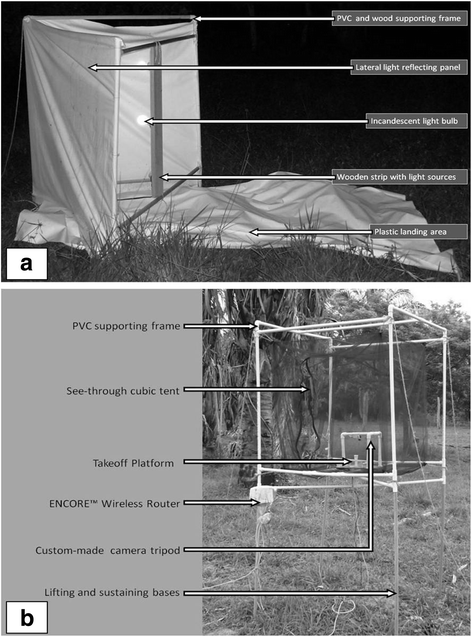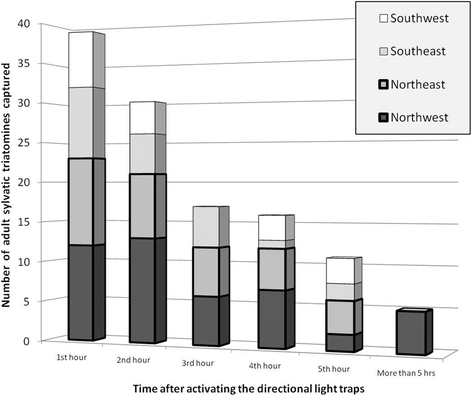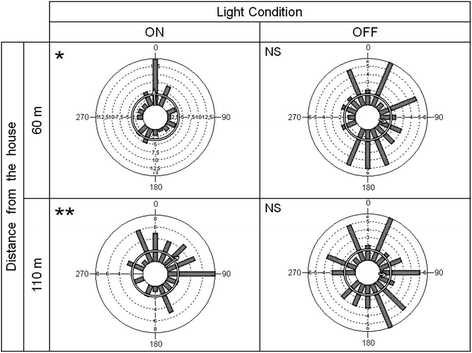Risks associated with dispersive nocturnal flights of sylvatic Triatominae to artificial lights in a model house in the northeastern plains of Colombia
- PMID: 26582012
- PMCID: PMC4652337
- DOI: 10.1186/s13071-015-1209-3
Risks associated with dispersive nocturnal flights of sylvatic Triatominae to artificial lights in a model house in the northeastern plains of Colombia
Abstract
Background: Control initiatives and continuous surveillance of vector-borne transmission have proved to be effective measures for diminishing the incidence of Chagas disease in endemic countries. However, the active dispersal of infected sylvatic adult triatomines by flight represents one of the main obstacles to eliminating domestic transmission.
Methods: In order to determine the risk that active dispersal of sylvatic adult triatomines represents in Colombian northeastern plains, we quantified the distribution and abundance of triatomines in palm trees (primarily Attalea butyracea) using live bait traps. Directional light traps were used to estimate the frequency of sylvatic triatomine dispersal and their possible origin. Finally, the effect of environmental parameters and artificial light sources on the take-off of sylvatic Rhodnius prolixus was evaluated in field experiments.
Results: R. prolixus was found in 90 % of the palm trees that densely aggregated toward the northern portion of the study area. R. prolixus, and three other sylvatic triatomine species were found to actively disperse and were attracted to the directional light traps (Triatoma maculata, Panstrongylus geniculatus and Psammolestes arthuri). Temperature, relative humidity, wind speed and night luminosity did not affect the active dispersal of the triatomines which is higher the first two hours after sunset. Artificial lights from houses at 60 and 110 m played a key role in the directionality of the R. prolixus take-offs. Trypanosoma cruzi was isolated from R. prolixus, T. maculata and P. geniculatus and was genotyped as T. cruzi I, III and IV.
Conclusions: Our results highlight the potential risk in Colombian northeastern plains of actively dispersing sylvatic triatomines and their role in the domestic introduction of Discrete Typing Units of T. cruzi associated to sylvatic foci of Chagas disease transmission.
Figures





References
-
- World Health Organization, UNICEF/UNDP/World Bank/WHO Special Programme for Research and Training in Tropical Diseases and Pan American Health Organization. TDR Reporte sobre la enfermedad de Chagas. Grupo de trabajo científico. TDR/SWG/09. Geneva: World Health Organization; 2009. http://apps.who.int/iris/handle/10665/69724.
-
- Lent H, Wydgodzinsky P. Revision of the Triatominae (Hemiptera, Reduviidae), and their significance as vectors of Chagas disease. Bull Amer Mus Nat Hist. 1979;163:123–520.
Publication types
MeSH terms
LinkOut - more resources
Full Text Sources
Other Literature Sources
Medical

